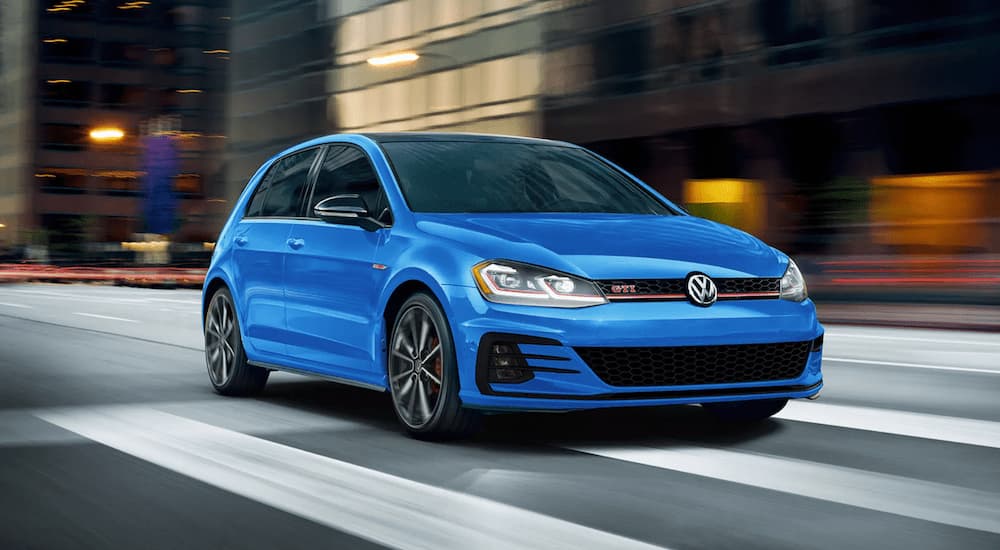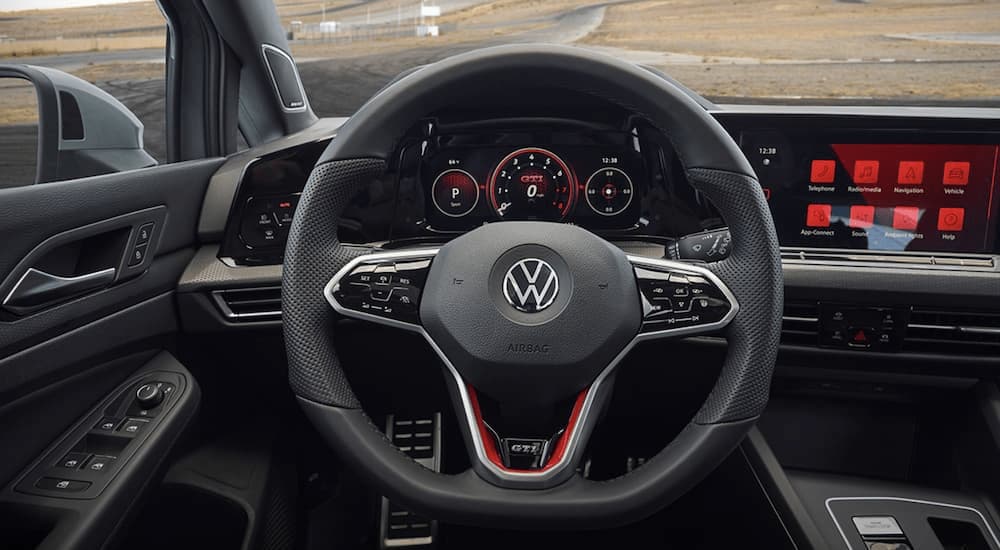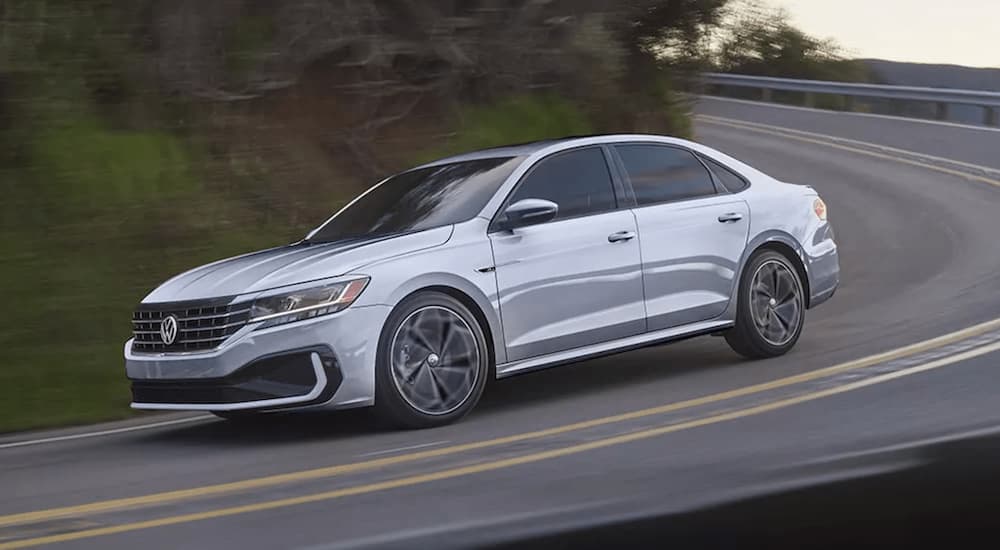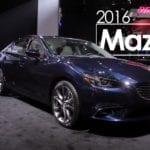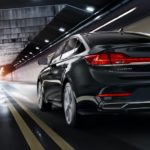You’ve probably wondered who gets the honor of naming all of the different car models that Volkswagen rolls out to the public. In fact, you’ve probably also wondered where those unusual names you’ve seen at your local VW dealer come from, too.
The names are usually generated internally, with a lot of research going into how each Volkswagen model name will translate in various languages or how customers around the world will associate with the brand. We’ve all heard the urban legend about the Chevy Nova’s reception in South America, where “no va” can mean “doesn’t go.” And while that’s not an entirely true story, there’s just enough potential for it to be valid to cause automakers to be especially careful when naming vehicles.
Most of Volkswagen’s model names come from mostly innocent sources, including animal names, winds and weather, and Greek mythology. Of course, it could be argued that not all animals, weather conditions, and Greek gods have the same upstanding reputation, but Volkswagen carefully considers those details, as well. Let’s take a look at some of the origins behind some of the most popular Volkswagen models of recent years and expand our cultural, meteorological, and zoological knowledge at the same time.
Mythology and Legends
Volkswagen tends to borrow quite a bit from Greek mythology. While we haven’t seen all twelve Gods of the Pantheon yet, it appears that Volkwagen is digging deeper into the classical tales to conjure up names that relate strongly to their intended product.
Eos, for example, is both a Greek goddess representing the dawn and a retractable hardtop convertible that was produced from 2006 to 2015. Just as Eos the goddess would rise into the sky from the river to allow the sun to shine on the land below, the roof of the Eos convertible would fold away to disperse sunshine on passengers.
Another popular example is the Volkswagen Atlas. Atlas was a Greek Titan who was cursed to hold the weight of the heavens on his back for his role in the uprising against Zeus. The vehicular version of Atlas is the first seven-passenger SUV offered by Volkswagen. Talk about shouldering a large responsibility!
Perhaps one lesser-known example is that of the Phaeton, as both the sedan and the Greek god have been somewhat lost to history through no fault of their own. According to Greek legend, Phaeton was the son of Helios, the god responsible for driving the sun in his chariot across the sky to provide daylight. As a sign of his favor, Helios permitted his son to fly the sun chariot, and things didn’t go so well. However, his misdirections while flying created the deserts of Africa, so perhaps there is beauty in error.
Somewhat parallel to this tale, the Volkswagen Phaeton was the automaker’s unexpectedly unsuccessful attempt to gain footing in the luxury automotive market. Introduced in 2003, the Phaeton was intended to compete with the Audi A8 and Mercedes-Benz S-Class. For all intents and purposes, it did. Reviewers praised the VW Phaeton as a nimble vehicle with every convenience considered. For example, the interior climate control system included a humidity monitoring function that ensured cabin comfort even when cruising at a steady 186 miles per hour. It even featured heated, massaging seats at a time when power-adjustable seats weren’t quite standard.
Was the Phaeton doomed by its name? Of course not, but like its namesake, the vehicle tried too hard to be something when it wasn’t quite ready for the scope of the job put before it.
The Winds and Weather
Some of Volkswagen’s most enduring models take their names from wind and weather. In America, we don’t often think of winds as having names today; however, harnessing the trade winds was once an essential factor in global shipment. These specific weather patterns can give traveling ships a boost and also direct storms, hurricanes, and other events.
In fact, the German word for trade winds is “Passat.” Many people are more familiar with the Passat as a mid-sized sedan that Volkswagen has manufactured since the 1970s. While the Passat has been discontinued following the 2022 model year, the winds will continue to blow.
The Volkswagen Golf deviates from the pattern just a bit since the Gulf Stream (“Golfstrom” in German) is actually an ocean current. “Golf” was also the name of a beloved horse belonging to one of VW’s managers, which might be the inspiration for the slight departure from the standard.
Perhaps one of the most fascinating vehicles in the wind and weather naming convention is the Scirocco. The “Sirocco” is an arid and mighty wind that blows upwards and eastward from the Sahara desert towards the Mediterranean Sea. Volkswagen’s take on the Scirocco became the manufacturer’s “fun car for the younger generation.”
Pairing modern Italian design with a transverse engine and state-of-the-art suspension, there was nothing quite like the Scirocco when it appeared on the roads in the early 1970s. Between its first year of manufacture in 1974 and the end of the first generation in 1981, over 500,000 Sciroccos were sold to eager drivers who wanted something different.
The second generation, known as Scirocco II, was produced through the 1990s. Then, in 2008, a third version hit the markets. The most recent Scirocco was designed to be a little more flexible in its talents, fitting in easily as a daily driver and a track contender. While the Scirocco left the market in 2017, it’s not impossible to think of an even more powerful version appearing on the horizon.
The Animals
Last but certainly not least are the animal names. Many drivers are familiar with the Fox and the Rabbit, two compact Volkswagens that made a huge impact on drivers in the 1980s. These smaller vehicles helped drivers navigate through uncertain economic times and helped pave the way for today’s compact and subcompact SUVs.
However, it’s the Volkswagen Type 1 that generally comes to mind when casually mentioning the manufacturer. You might know it better as the Beetle. In France, it’s often referred to as the Ladybug, and in Thailand, it’s compared to a turtle. But the image of the “Kafer,” or beetle, was so popular and indelible the manufacturer officially changed the vehicle’s name in the 1940s to reflect its true personality.
Then there’s the Tiguan. At first glance, it doesn’t sound very much like an animal. In fact, “Tiguan” is a portmanteau–or blended word–composed of the German words for “tiger” and “iguana” that just so happens to work in English, as well. New to the market in 2009, the Volkswagen Tiguan recently received a style refresh for 2022, which seems to indicate the model is going strong after 13 years. The compact crossover SUV maintains a stylish exterior and a spacious interior, offering three rows of seating and plenty of creature comforts in the cabin.
The Tiguan continues to perform well as a city-friendly family vehicle, or rather, a family-friendly city vehicle, depending on your priorities. It’s easy to see the tiger in this fierce contender. The iguana, however, seems to be lurking elsewhere–specifically in VW’s marketing campaigns, which often feature the unlikely pair of animals.
As Long as It Drives Well…
Most drivers aren’t too fussy about the name of their vehicle, as long as it is dependable and fun to drive. In the case of Volkswagens, there’s no need to worry. Just a quick tour on the open road will reveal that many generations of VW vehicles continue to mingle on modern streets. Though models change, are discontinued, and reborn, they have an indelible place in our hearts and minds. The classic Beetle from the 1960s, for example, is such an icon that the roadways would mourn its forever disappearance.
Thankfully, Volkswagens continue to endure, and while new and exciting models are on the horizon, earlier models will live on in legend, with names we could never forget. While the naming convention of Volkswagens isn’t necessarily as uniform as one might expect from a European car manufacturer, it’s the quirkiness and inside references that make the brand so endearing. Oh yeah, and the vehicles themselves are pretty nice, too.
